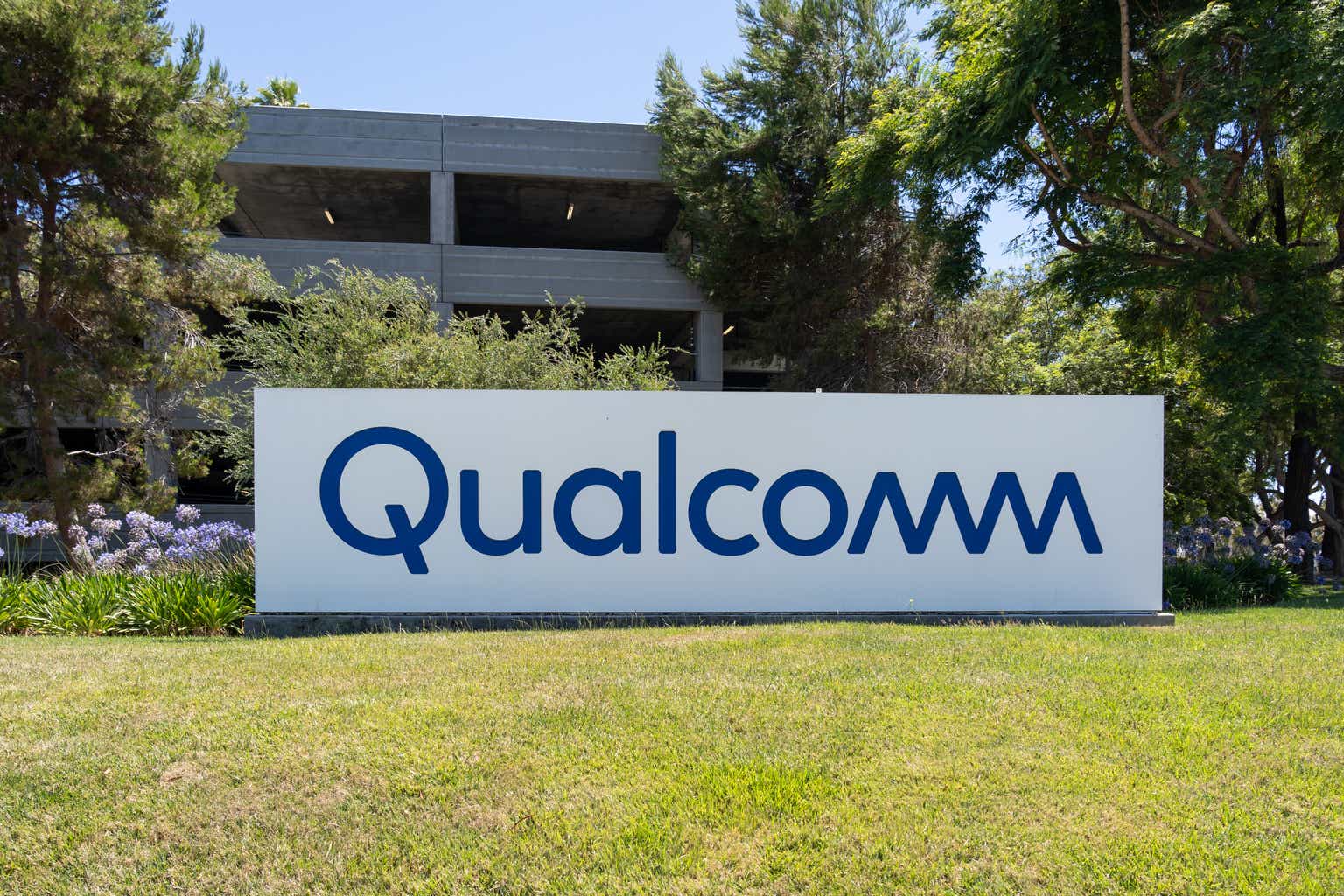Article Thesis
QUALCOMM Incorporated (NASDAQ:QCOM) (“Qualcomm”) is a semiconductor player with appealing growth and AI tailwinds that trades at a valuation that is far from high. While shares have moved up nicely this year, Qualcomm remains an attractive long-term investment at current prices.
Past Coverage
I have covered Qualcomm Incorporated in the past here on Seeking Alpha, most recently in early May, where I took a look at the company’s most recent quarterly earnings results. I gave QCOM a “Buy” rating back then, which has worked out well so far, as shares are up 14% since then. With Qualcomm receiving attention due to a couple of news items and with its next earnings results coming up this month (post-market July 31st), it is time to take another look at the semiconductor company.
Qualcomm: Recent News
Over the last couple of days, Qualcomm was in the news a couple of times:
The first news item is related to sanctions against Chinese tech player Huawei. Several supplier or export licenses were revoked by the U.S. government, which had allowed companies such as Qualcomm to export their chips to Huawei, so the Chinese tech giant could use them to manufacture smartphones, notebooks, and so on. Among the affected companies with revoked licenses are Qualcomm and Intel Corporation (INTC).
While Huawei’s flagship phones use chips made by Semiconductor Manufacturing International Corporation (OTCQX:SIUIF), such as the Kirin 9000 series, Western semiconductor companies have still been supplying chips and technology to Huawei. The fact that a couple of export licenses have now been revoked is a negative, but far from a disaster for both QCOM and INTC. After all, Huawei is just one manufacturer of smartphones, notebooks, and so on among many others, and both companies have likely known for years that the revenues that could be generated via sales to Huawei were far from set in stone. After all, many export licenses had not been greenlighted in the past, either, and Western chip companies had more than enough time to adjust to this fact and to focus on Western (or Western-aligned) customers such as Apple Inc. (AAPL) or Samsung Electronics Co., Ltd. (OTCPK:SSNLF). I thus do not believe that recent changes in export licensing change the bullish thesis for Qualcomm.
Another news item we recently got is that a newly introduced Samsung laptop, the Galaxy Book 4 Edge, was struggling with some software from Adobe Inc. (ADBE) and some popular games such as Fortnite. Since Qualcomm is the supplier of the CPUs used in the Galaxy Book 4 Edge, this news was tied to QCOM, and shares pulled back. But while it is an issue that Samsung’s new notebook, branded as an AI notebook, is having trouble running some common software, I believe that it is highly likely that this isn’t Qualcomm’s fault. After all, problems with a couple of specific programs seem more like a compatibility problem stemming from the operating system, missing or incompatible drivers, and so on.
Moreover, the Galaxy Book 4 Edge isn’t a gaming device anyway, so potential customers will, I assume, not mind issues with a couple of specific games too much. For those interested in gaming, dedicated gaming devices are better suited than a power-efficient and slim notebook anyway. While Qualcomm got some negative news here, I believe that this isn’t a long-term problem for the company. Its Snapdragon chips aren’t really made for gaming (and aren’t branded as gaming chips), and it seems likely to me that QCOM’s chips aren’t the issue when it comes to the notebook’s problems in running some specific programs.
The third news item related to Qualcomm is a report by Bank of America Corporation (BAC) about active managers increasing their exposure to the company, even though active managers reduced their exposure to the overall semiconductor industry. In other words, active managers have increased their exposure to QCOM relative to other chip companies — which could be a positive indicator for Qualcomm, as these active managers wouldn’t increase their exposure if they thought that Qualcomm was a bad pick. These active managers seem to believe that QCOM is more promising compared to the average chip company, which is a positive sign — although these money allocators might be wrong, and thus outperformance isn’t guaranteed, of course.
Qualcomm: Earnings Outlook
Later this month, Qualcomm will report its fiscal third-quarter earnings results. So far, the outlook is quite positive: Wall Street analysts are forecasting an increase of 9% when it comes to the company’s revenues, with the top-line being expected at $9.2 billion. Over the last couple of months, we have seen many upward revisions, which means that analysts may increase their estimates further until the company’s earnings results are announced.
Over the last three years or twelve quarters, Qualcomm has beaten the consensus revenue estimate ten times. The company thus has a track record of outperforming expectations. Thus, I wouldn’t be very surprised if QCOM managed to beat the consensus estimate once more with its upcoming report. A revenue increase of 10%+ thus seems possible for sure, although it is not set in stone. Revenue growth will be driven by contributing factors such as higher licensing revenue and growth in the automotive business — the automotive business showed a revenue growth rate of 35% during the most recent quarter.
When it comes to profits, Qualcomm is forecasted to see a steep 20% increase on a per-share basis. This growth will be driven by the expected revenue increase, operating leverage (operating costs are distributed over a larger revenue and gross profit base), and share repurchases, which give a nice little extra boost to QCOM’s earnings per share number thanks to a declining share count number.
When it comes to its past earnings per share performance, relative to expectations, Qualcomm again has a strong track record. It has beaten the analyst consensus in 10 out of the last 12 quarters, thus another earnings beat wouldn’t be much of a surprise. But even if QCOM doesn’t beat estimates this time, the expected 20% earnings per share increase would be a pretty strong result.
QCOM: Significant Long-Term Potential
When it comes to a stock’s total return potential over the long run, several factors are important. Valuation plays a role, of course, due to potential total return tailwinds from multiple expansion and potential total return headwinds from multiple compression. Underlying earnings per share growth plays a role as well, and finally, dividends can have a major impact on the returns an investor sees over time.
While Qualcomm is not a bargain at 20x forward net profits, it is far from expensive. Many other chip companies, including ones with weaker growth such as Intel, are trading at higher valuations. Other AI-exposed chip players such as Advanced Micro Devices, Inc. (AMD) or Broadcom Inc. (AVGO) trade at much higher valuations compared to QCOM — AMD is valued at 47x this year’s earnings, while Broadcom trades at 35x this year’s earnings. On a relative basis, QCOM thus could have some upside potential.
The earnings growth outlook is positive as well, thanks to underlying market growth in areas such as handsets and the emerging automotive business. Add margin tailwinds from operating leverage and buybacks, and QCOM could grow its earnings per share at a nice pace over the coming years. Analysts are forecasting earnings per share growth of 18%, 14%, and 10% for the current year, next year, and the one after that.
If those estimates are hit, QCOM will earn $12.50 in fiscal 2026 — put a 22x earnings multiple on that, and QUALCOMM would trade at $275 a little more than two years from now, which would make for a nice share price return of 35% compared to the current share price of $204. When we include the dividend, the total return would be even better, at close to 40% over the next two years — even if QCOM does not outperform earnings per share estimates going forward, while it has done so in the past.
Even if Qualcomm were to trade at just 18x net earnings two years from now, investors would see their shares rise to $225, which would make for a return of 14% including dividends over the next two years — not especially great, but still far from bad. QCOM could thus generate reasonable total returns even if its valuation were to decline by 10%, which means that we do not need bullish assumptions for QCOM to be a solid investment.
Takeaway
The reaction to the recent Samsung notebook news seems overblown to me, and since Qualcomm has an appealing growth outlook, a compelling shareholder return program, and an undemanding valuation, I remain bullish on this chip player. I am very happy with my position so far.
Editor’s Note: This article discusses one or more securities that do not trade on a major U.S. exchange. Please be aware of the risks associated with these stocks.
Read the full article here












Leave a Reply